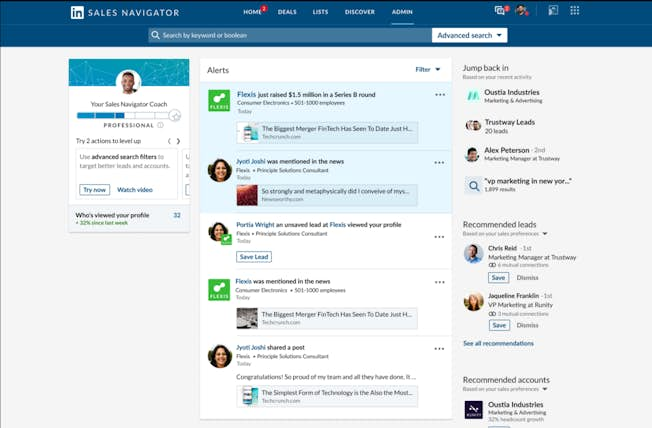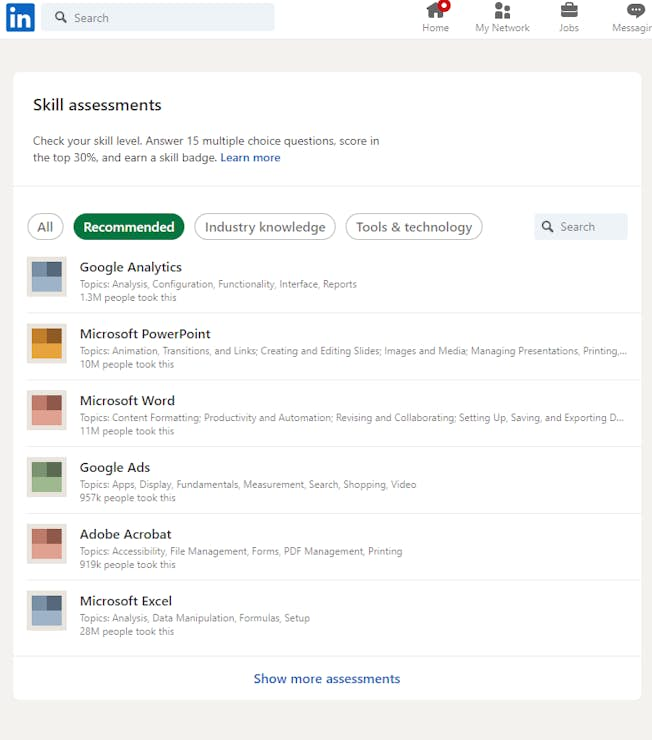Aug 3, 2023
Know the Score: How to Boost Your LinkedIn Social Selling Index
The ability to sell online is a must for any marketer or seller. It’s not just about selling a product or service, it’s about having a presence online that’s credible and trustworthy.
LinkedIn’s Social Selling Index (SSI) is a formula that assesses the ‘social selling’ abilities of any user on the platform. It ranks your performance on LinkedIn against others in your network or industry and lets you know if your posts resonate with your audience.
Having an understanding of your SSI allows you to become a better seller and gauge how successful you are at driving engagement.
The better your SSI is, the more you will be able to sell your ‘brand’ and product/s (and it also plays an important role in digital selling which uses a variety of strategies).
What is Social Selling?
Social selling refers to using social networks to find and nurture leads and prospects and can be effective for B2C and B2B. So, when we refer to SSI, we’re talking about how well a person demonstrates their sales skills.
Digital and social selling involves various activities that revolve around personal branding that includes social media to boost presence and credibility. As we create more and more profiles (specifically professional profiles via LinkedIn), we’re selling ourselves on a level of personal/professional to connect with others.
It also can relate to social prospecting and building brand awareness. This could be your personal brand or selling yourself as an entrepreneur.
Why Should Digital Marketing Professionals Care About Social Selling?
Social commerce is predicted to grow three times as fast as traditional ecommerce, more than doubling from $492 billion worldwide in 2021 to $1.2 trillion in 2025 according to an Accenture report.
This just shows the potential of social media to drive revenue for any business by attracting the ‘right’ prospects and using content to engage and convert. The benefits of social selling are:
- Collaborate & Network - Rather than relying on cold calling to establish relationships, LinkedIn enables you to identify and engage with leads and reach out slowly, instead of hitting them with a pitch out of the blue.
- Personal branding - LinkedIn professionals want to engage with credible brands and people with a strong presence such as well-respected thought leaders. So if you take the time to create and curate content that’s credible and take part in meaningful conversations, you can boost your ‘brand’.
- Keep an eye on competitors - Knowing what your competitors are doing can help you stay on top of new developments and get insights into what other brands or sellers are saying or doing. IT never hurts to know what you’re up against.
- Boosts traffic - If you post interesting content then people will click through to read it. You can use LinkedIn to publish an article with a link at the end or host a blog on your company’s website to drive traffic. Why not try both approaches to see which works best?
- Generate high-quality leads - If you’ve established a presence on LinkedIn and are seen as credible the leads you and your company will get should be of higher quality as they’re getting in touch due to your knowledge and activity on the platform.
Plus social selling leaders get better sales results

So whether you are formally in ‘sales’ or not, anyone pursuing a marketing-related profession will need to understand the importance of engagement and lead nurturing to succeed.
What is the Social Selling Index?
The phrase started to become mainstream after LinkedIn introduced their social selling index (SSI) several years ago. While it relates to a person’s capacity to sell, it’s also an interesting approach for people wanting to boost their brand on the network.
It’s also a great marketing tool for LinkedIn to get people more engaged on the site by selling themselves.
So what is the SSI formula based on? There are four elements that the SSI looks at to determine a score:
- Establishing a professional brand
- Identification of prospects
- Engaging in meaningful conversations
- Building relationships
Here’s a video that gives an overview of the SSI dashboard so you can see what elements are covered.
LinkedIn recommends aiming for an SSI score of 75 or higher. At that level, you will be considered an industry thought leader on the platform.
You can find your SSI score by clicking here if you’re logged in. Otherwise, go to Sales Navigator and go to ‘Admin’ and then click on ‘User Report’.
How to Boost Your Social Selling index Score
If you have a low SSI score, it’s worth taking some to improve it. On your personal dashboard, you can see the scores for the four elements that make up the social selling index.
This example shows the individual is weak in engaging with insights and finding the right people.

Let’s look at some best practices to move the SSI dial-up so you can reach through leader status!
1) Create a Professional Persona
You probably know what a buyer persona is, so if you’re on LinkedIn, you should take inspiration and create a professional persona that will resonate with your peers, clients and/or prospects.
View your profile from the perspective of other people reading it -- would they really be attracted to your profile and want to engage with you? Are you addressing their pain points or interests through content? (Or better yet ask a trusted friend or colleague to look at it to get another opinion).
Make sure to look at the completion rate of your profile and get it to 100 percent so nothing is missing and you’re making the most of LinkedIn.
Top tip: Check out ‘B2B Buyer Persona Framework’ for some guidance in this area.
2) Use LinkedIn Tools
Take advantage of the free tools on LinkedIn to expand your reach and find prospects. Sales Navigator is a deep sales platform that enables virtual selling by allowing sales professionals to build and maintain relationships with their buyers at scale.
You can use the ‘Lead Builder’ function to filter and locate prospects in an organization and save those leads under a named account. It can be integrated with other technologies (e.g. a CRM) to provide reliable and real-time data.

LinkedIn Small Business can help a business boost sales, build trust, and hit its business goals. LinkedIn markets the service as ‘dedicated to connecting you with resources, tips, and news related to small businesses’. Resources include checklists, guides and features such as text ads and sponsored content.
On your LinkedIn profile, you can demonstrate your skills to prospects by using the ‘Skills Assessment’ tool. These are under different categories from ‘Recommended’ to ‘Industry knowledge’.

3) Don’t Automate (too much)
While LinkedIn prohibits a lot of automation tools such as AI tools like ChatGPT on the platform it also works with select partners to help recruiters, marketers, and advertisers automate some tasks.
If you choose to use automation on LinkedIn, think about if it will help or hinder your social selling activity. Yes, automation can save you time on manual tasks but it can also mean you lose any personal touch.
So for post scheduling, analytics and lead generation, it can help, but for post creation or writing emails, make sure you’re making the content tailored to the person and add some personality.
4) Engage with Insights
LinkedIn’s SSI score measures your engagement on the platform. That means it is analyzing and scoring the shares, likes, and comments your posts receive.
It also looks at how you engage with other people’s posts through comments, shares and reactions. This looks at the level you’re following trends or keeping on top of developments in your industry.
You should look at and engage with posts on a regular basis to not only improve your SSI score but build relationships with other LinkedIn users and share your knowledge.
4) Create High-Quality Connections
It doesn’t matter how many followers you have on LinkedIn, what matters more is the quality of your connections. The right people will be happy to guide you to greater opportunities, whether that’s promoting you as a potential employee or colleague.
A good rule of thumb is to only contact people that you feel you genuinely like! It may seem obvious, but sometimes we get so caught up in what people are doing that we don’t stop to take a look at how they act -- is this someone that you think you’d like to have coffee or even hang out at a party with?
LinkedIn groups are a great way to assess not only who in your industry are true professionals, but the people that give you insights and advice if required.
SSI: Conclusion
Social selling is about showing your prospects value based on what they will be interested in and will want to engage with.
So it’s important you approach people with a valuable offer, not an ‘ask’. You can use LinkedIn to highlight something your connections would be genuinely interested in and start a conversation from there.
Your SSI score shows how good you are at hitting the four key elements - establishing a professional brand, identifying prospects, having meaningful conversations and building relationships, and it’s a great way to understand how effectively you market and sell yourself.
But remember, your SSI score is just an indicator -- it doesn’t say everything about you professionally or personally. Like any other metric you should use it as a barometer and motivator - not be too attached to it or apply some sort of “meaning”!
Become a Social Selling Specialist
Social selling offers marketers and sellers a great way to attract, engage and influence prospects online. The Digital Marketing Institute’s short certified Digital and Social Selling course will teach you the fundamentals of social selling, how to find and target prospects, attract customers, increase engagement and how to close and retain. Sign up today to get started!
Related
- Categories:
- Articles
- Social Selling
- Customer Experience (CX)
Upgrade to Power Membership to continue
your access to thousands of articles, toolkits, podcasts, lessons and much much more.
Become a Power Member- Login
- View Courses
- - - -
- Courses
- Resources
- - - -
- My Account
- Change Password
- Logout





